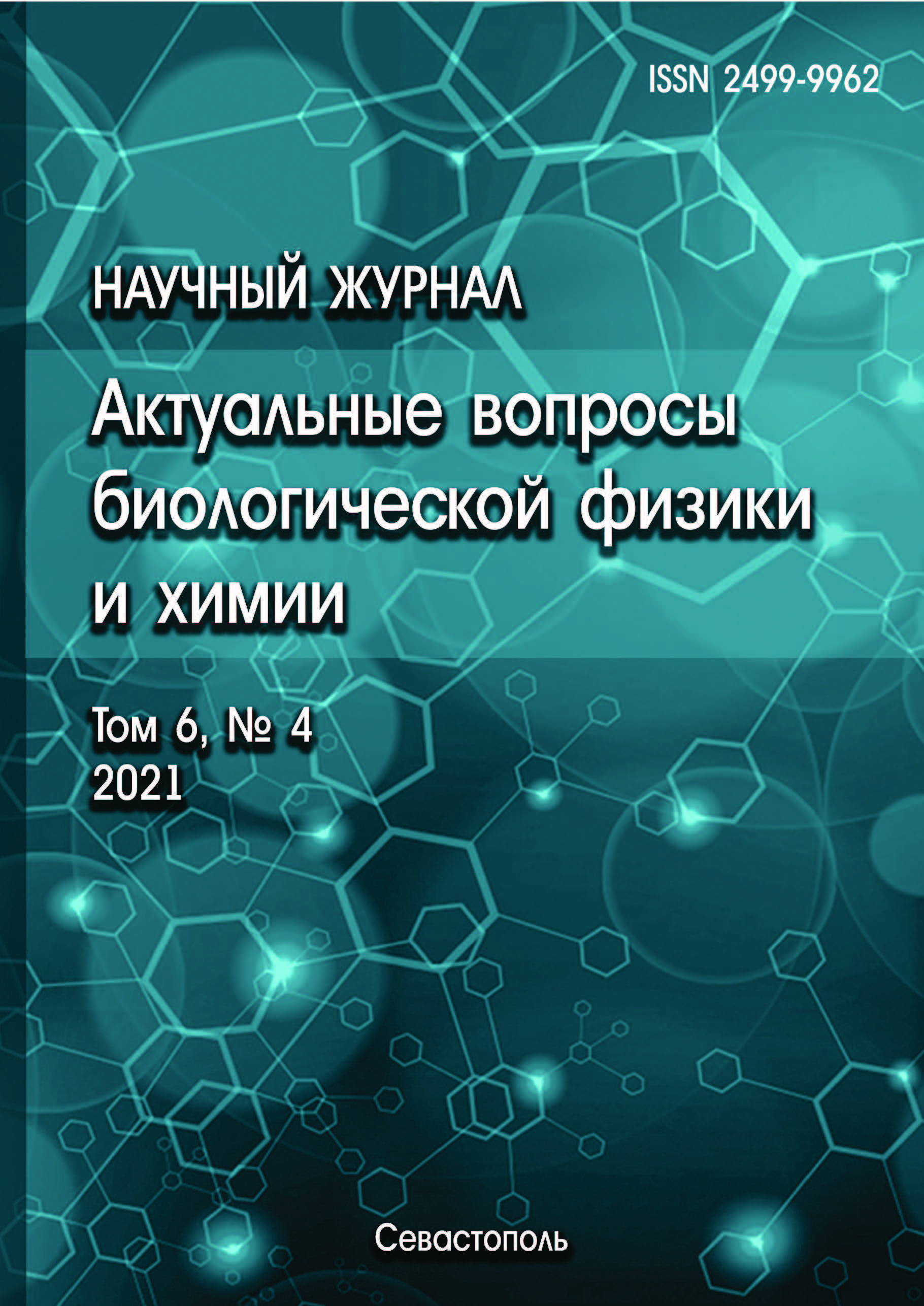The paper considers the mechanisms of assimilation, fixation and utilization of inorganic forms of carbon by cyanobacteria cells. Carbon sources are carbon dioxide, which, depending on the pH value, can be in the form of CO2, bicarbonate ions HCO3- or carbonate ions CO32-. Carbon dioxide and bicarbonate ions are sources of inorganic carbon for microalgae. Therefore, it is the availability of carbon in one form or another that can act as a limiting factor for growth. To date, the CO2-concentrating mechanism in the cells of microalgae and cyanobacteria has been studied in sufficient detail, due to which the maximum rates of photosynthetic oxygen release at low and high concentrations of CO2 are the same. The efficiency of using intracellular carbon is increased due to the presence of an intracellular pool in which carbon is represented in the form of bicarbonate ions, and the reduction of CO2 losses due to diffusion processes. The literature describes the CO2-concentrating mechanism for different types of microalgae. Most of the studies of CO2-CM were performed on eukaryotic cells, in which the intracellular pool of carbon can be located both in the cytoplasm and in the stroma of the chloroplast. CO2-CM is also described for cyanoprokaryotes, in which, according to, carbonic anhydrase is not detected in the cytoplasm. On the basis of modern concepts of CO2-CM for A. platensis, a generalized scheme is proposed that describes the main pathways of inorganic carbon metabolism.
spirulina, carbon dioxide, bicarbonate ion, carbonate ion, assimilation, carbon-concentrating mechanism
1. Egorov V.N., Popovichev V.N., Gulin S.B. i dr. Vliyanie pervichnoy produkcii fitoplanktona na oborot biogennyh elementov v pribrezhnoy akvatorii Sevastopolya (Chernoe more). Biologiya morya, 2018, t. 44, № 3, s. 207-214. @@Egorov V.N., Popovichev V.N., Gulin S.B. et al. The influence of primary phytoplankton production on the turnover of biogenic elements in the coastal water area of Sevastopol (the Black Sea). Marine biology, 2018, vol. 44, no. 3, pp. 207-214. (In Russ.)
2. Zheleznova S.N. Produkcionnye harakteristiki morskoy diatomovoy vodorosli Cylindrotheca closterium (Ehrenb.) Reimann et Lewin v intensivnoy kul'ture pri razlichnyh istochnikah azota v pitatel'noy srede. Morskoy biologicheskiy zhurnal, 2019, t. 4, № 1, s. 33-44. doi:https://doi.org/10.21072/mbj.2019.04.1.04 @@Zheleznova S.N. Production characteristics of the marine diatom Cylindrotheca closterium (Ehrenb.) Rayman net Levin in intensive culture with various sources of nitrogen in the nutrient medium. Marine biological journal, 2019, vol. 4, no. 1, pp. 33-44. (In Russ.) doi:https://doi.org/10.21072/mbj.2019.04.1.04 EDN: https://elibrary.ru/ZSHCNX
3. Kozhemyaka A.B. Zavisimost' koncentracii organicheskogo veschestva v kletke ot ee ob'ema dlya chernomorskih vidov Bacillariophyta. Mors'kiy ekologіchniy zhurnal, 2014, t. XIII, № 1, c. 35-43. @@Kozhemyaka A.B. The dependence of the concentration of organic matter in the cell on its volume for the Black Sea species of Bacillariophyta. Morsky ekologichny zhurnal, 2014, vol. XIII, no. 1, pp. 35-43. (In Russ.)
4. Pronina N.A. Organizaciya i fiziologicheskaya rol' SO2-koncentriruyuschego mehanizma. Fiziologiya rasteniy, 2000, t. 47, № 5, c. 801-810. @@Pronina N.A. Organization and physiological role of the CO2-concentrating mechanism. Plant physiology, 2000, vol. 47, no. 5, pp. 801-810. (In Russ.)
5. Stukolova I.V., Trenkenshu R.P Osnovnye tipy pitaniya vodorosley (kratkiy glossariy). Voprosy sovremennoy al'gologii, 2020, № 1 (22), c. 34-38. doi:https://doi.org/10.33624/2311-0147-2020-1(22)-34-38 @@Stukolova I.V., Trenkenshu R.P. The main types of algae nutrition (a brief glossary). Questions of modern algology, 2020, no. 1 (22), pp. 34-38. (In Russ.) doi:https://doi.org/10.33624/2311-0147-2020-1(22)-34-38 EDN: https://elibrary.ru/KAOWLR
6. Trenkenshu R.P., Zhondareva Ya.D. Kinetika simporta organicheskih form biogenov u mikrovodorosley. Morskie biologicheskie issledovaniya: dostizheniya i perspektivy. Sevastopol': Ekosi-gidrofizika, 2018, t. 3, c. 452-455. @@Trenkenshu R.P., Zhondareva Ya.D. Kinetics of import of organic forms of biogens from microalgae. Marine biological research: achievements and prospects. Sevastopol: Ekosi-hydrophysics, 2018, vol. 3, pp. 452-455. (In Russ.)
7. Zarrouk C. Contribution a l’etude d’une cyanophycee. Influence de divers physiques et chimiques sur la crossance et la photosynthese de Spirulina maxima: Paris: Ph.D. thesis, 1966, 138 p.
8. Price G.D., Badger M.R., Woodger F.J., Long B.M. Advances in understanding the cyanobacterial CO2-concentrating-mechanism (CCM): functional components, Ci transporters, diversity, genetic regulation and prospects for engineering into plants. J. Exp. Bot., 2008, vol. 59, no. 7, pp. 1441-1461. doi:https://doi.org/10.1093/jxb/erm112 EDN: https://elibrary.ru/MHUBNL
9. Losh J.L., Young J.N., Morel F.M.Rubisco is a small fraction of total protein in marine phytoplankton. New Phytol, 2013, vol. 198, pp. 52-58.
10. Raven J.A., Beardall J. Dark respiration and organic carbon loss / In: Borowitzka M.A., Beardall J., Raven J., Beardall J. The physiology of microalgae. Springer, 2016, pp. 129-140.
11. Samylina O.S. Uglerod-koncentriruyuschiy mehanizm kak komponent adaptacii ekstremal'no natronofil'noy cianobakterii Euhalothece natronophila k suschestvovaniyu v sodovyh ozerah: avtoref. dis. kand. biol. nauk. M., 2008, 24 s. @@Samylina O.S. Carbon-concentrating mechanism as a component of adaptation of the extremely natronophilic cyanobacterium Euhalothece natronophila to existence in soda lakes: abstract of the dissertation of the candidate. biol. nauk. M., 2008, 24 p. (In Russ.) EDN: https://elibrary.ru/NKRDGP
12. Janson Ch., Northen T. Calcifying cyanobacteria - the potential of biomineralization for carbon capture and storage. Curr. Op. Biotech, 2010, vol. 21, pp. 365-371. DOI: https://doi.org/10.1016/j.copbio.2010.03.017; EDN: https://elibrary.ru/NAPMTZ
13. Price G.D. Inorganic carbon transporters of the cyanobacterial CO2 concentrating mechanism. Photosynth. Res, 2011, vol. 109, pp. 47-57. doi:https://doi.org/10.1007/s11120-010-9608-y EDN: https://elibrary.ru/YCKFUD










